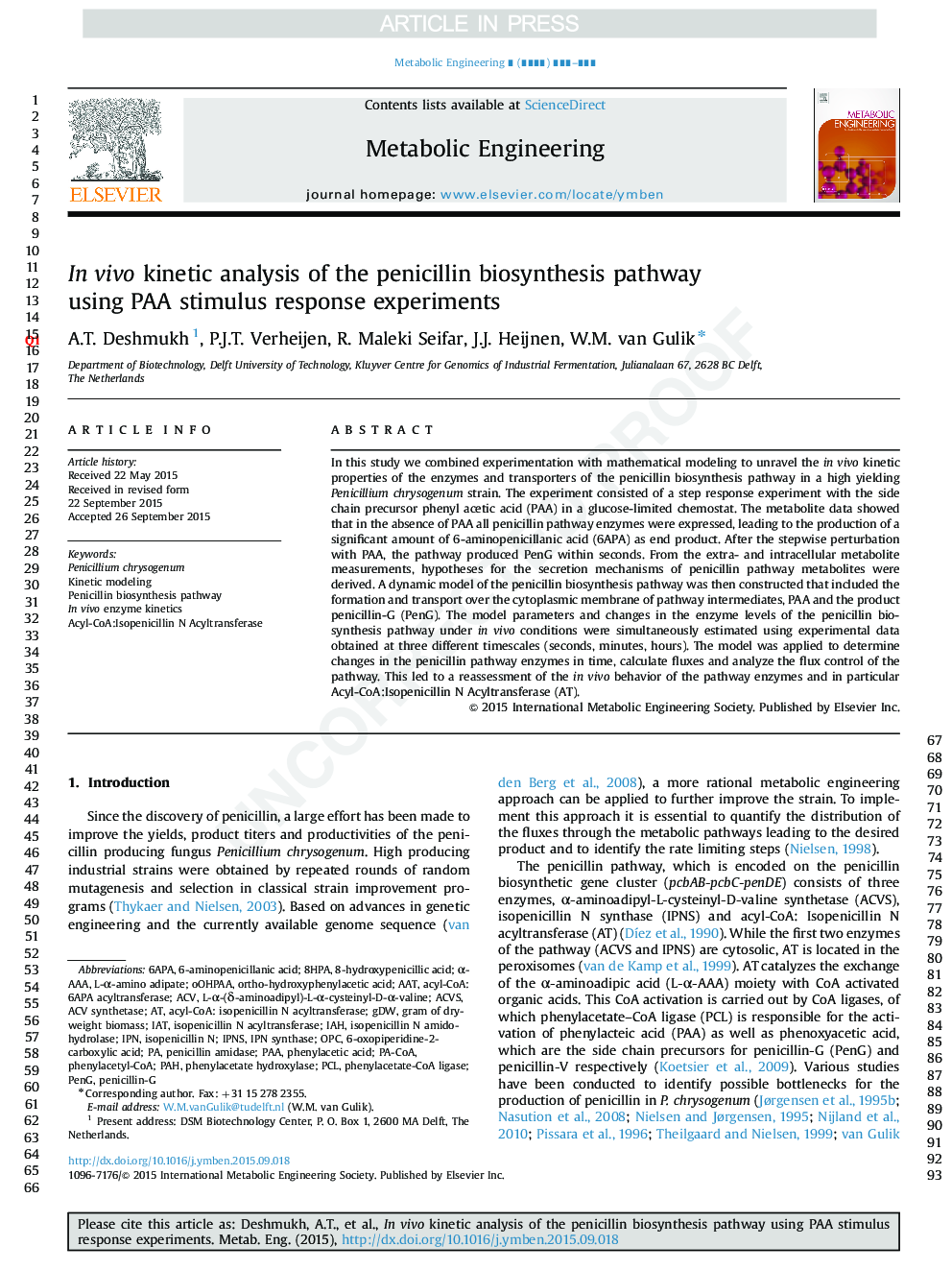| Article ID | Journal | Published Year | Pages | File Type |
|---|---|---|---|---|
| 6494316 | Metabolic Engineering | 2015 | 19 Pages |
Abstract
In this study we combined experimentation with mathematical modeling to unravel the in vivo kinetic properties of the enzymes and transporters of the penicillin biosynthesis pathway in a high yielding Penicillium chrysogenum strain. The experiment consisted of a step response experiment with the side chain precursor phenyl acetic acid (PAA) in a glucose-limited chemostat. The metabolite data showed that in the absence of PAA all penicillin pathway enzymes were expressed, leading to the production of a significant amount of 6-aminopenicillanic acid (6APA) as end product. After the stepwise perturbation with PAA, the pathway produced PenG within seconds. From the extra- and intracellular metabolite measurements, hypotheses for the secretion mechanisms of penicillin pathway metabolites were derived. A dynamic model of the penicillin biosynthesis pathway was then constructed that included the formation and transport over the cytoplasmic membrane of pathway intermediates, PAA and the product penicillin-G (PenG). The model parameters and changes in the enzyme levels of the penicillin biosynthesis pathway under in vivo conditions were simultaneously estimated using experimental data obtained at three different timescales (seconds, minutes, hours). The model was applied to determine changes in the penicillin pathway enzymes in time, calculate fluxes and analyze the flux control of the pathway. This led to a reassessment of the in vivo behavior of the pathway enzymes and in particular Acyl-CoA:Isopenicillin N Acyltransferase (AT).
Keywords
Related Topics
Physical Sciences and Engineering
Chemical Engineering
Bioengineering
Authors
Amit T. Deshmukh, Peter J.T. Verheijen, Reza Maleki Seifar, Joseph J. Heijnen, Walter M. van Gulik,
